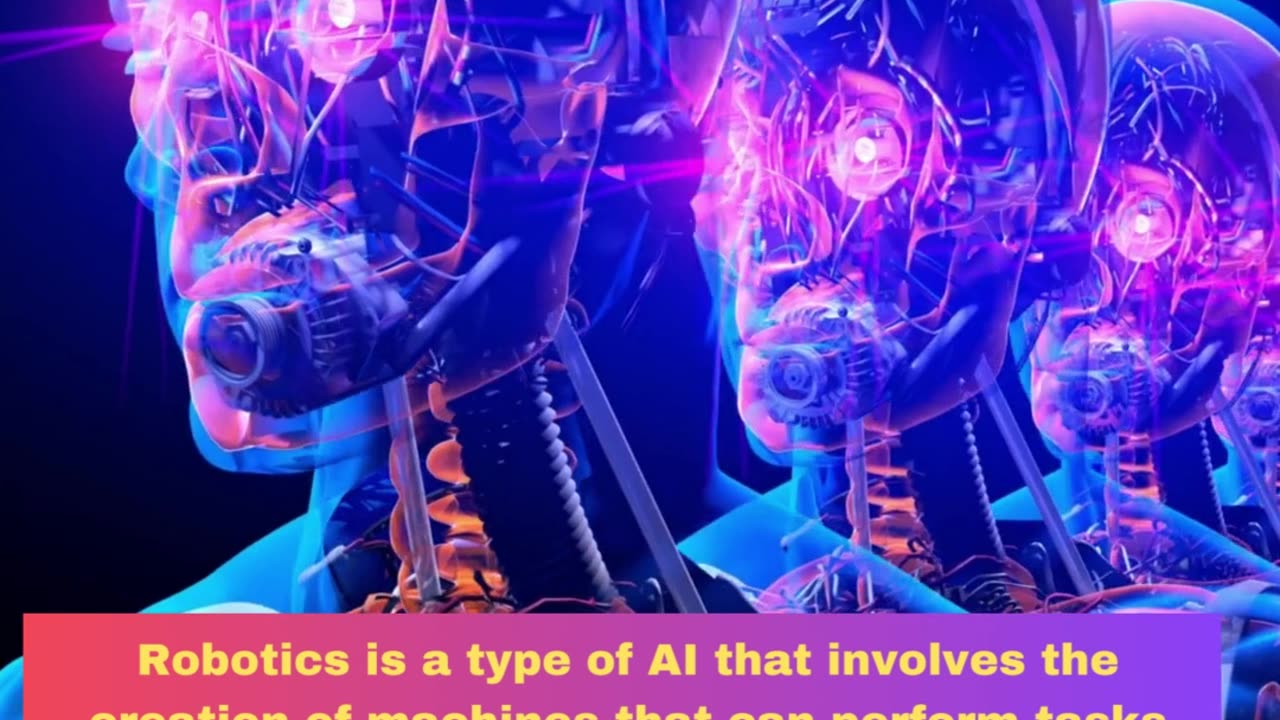Premium Only Content

Artificial Intelligence Explained | Types of AI Tutorial
#viral #shorts #short #latestnews #technology #aitechnology #ai #2023 #artificialintelligence #2050 #machinelearning #ml #nlp #deeplearning #robotics #computervision #everyone
Artificial Intelligence (AI) can be categorized into several types based on their functionality, capabilities, and applications. Here are some of the most common categories of AI:
1. Rule-based AI: Rule-based AI, also known as expert systems, is designed to emulate the decision-making abilities of a human expert in a specific domain. It uses a set of predefined rules and logical deductions to arrive at conclusions.
2. Machine Learning (ML): Machine learning is a type of AI that allows machines to learn from data and improve their performance without being explicitly programmed. It is based on algorithms that can identify patterns and relationships in data and use them to make predictions or decisions.
3. Deep Learning (DL): Deep learning is a type of machine learning that uses artificial neural networks (ANNs) to process and analyze large amounts of data. It is particularly effective at tasks that involve pattern recognition, such as image and speech recognition.
4. Natural Language Processing (NLP): NLP is a type of AI that allows machines to understand and interpret human language. It is used in applications such as language translation, chatbots, and voice assistants.
5. Robotics: Robotics is a type of AI that involves the creation of machines that can perform tasks autonomously or with minimal human supervision. It is used in applications such as manufacturing, healthcare, and exploration.
6. Cognitive Computing: Cognitive computing is a type of AI that aims to emulate the human thought process, including reasoning, learning, and problem-solving. It combines various AI technologies, such as NLP, machine learning, and computer vision, to create intelligent systems that can interact with humans in a natural way.
7. Computer Vision: Computer vision is a type of AI that enables machines to interpret and understand visual data from the world around them. It is used in applications such as image recognition, object detection, and autonomous vehicles.
Liking our videos is a great way to show your support and let us know that you're enjoying the content we create. Sharing our videos on your social media platforms is a fantastic way to help us reach a wider audience and connect with more people who might be interested in what we have to offer.
Finally, subscribing to our channel is the best way to stay up-to-date with our latest videos and content. You'll never miss out on a new upload, and you'll be part of a community that shares your interests and passions.
-
 LIVE
LIVE
Badlands Media
9 hours agoBaseless Conspiracies Ep. 149
5,727 watching -
 2:56:12
2:56:12
TimcastIRL
4 hours agoTrump SLAMS Democrats Over Irina Zarutska Killing, Says WAR Over Chicago Crime | Timcast IRL
149K89 -
 29:08
29:08
Afshin Rattansi's Going Underground
1 day agoCol. Lawrence Wilkerson: World War 3 is ALREADY HERE, Netanyahu is INTENT on Greater Israel
10K21 -
 LIVE
LIVE
SpartakusLIVE
6 hours agoNONSTOP Snipes, Rockets, and BICEPS = Monday MOTIVATION
498 watching -

Rallied
7 hours ago $0.39 earnedSolo Challenges All Day
42.4K2 -
 1:27:53
1:27:53
Flyover Conservatives
9 hours agoIs AI Actually Alien Intelligence? Dr. Jason Dean Exposes the Dark Side | FOC Show
21.9K -
 1:47:36
1:47:36
Glenn Greenwald
6 hours agoJD Vance and Rand Paul Clash on Due Process: War on Terror Echoes; Has the U.S. Given Up on Confronting China? Ben Shapiro's Latest Falsehoods About Israel | SYSTEM UPDATE #510
93.2K67 -
 LIVE
LIVE
RaikenNight
4 hours ago $0.39 earnedExploring the Galaxy of No Mans Sky
192 watching -
 LIVE
LIVE
Spartan
5 hours agoRanked and Expedition 33 (NG+4 and all enemies Set to 10x health)
90 watching -
 2:54:31
2:54:31
Jokeuhl Gaming and Chat
9 hours agoDARKTIDE - Warhammer 40k w/ Nubes and AoA
11.9K1